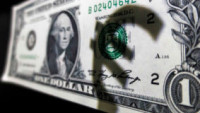 We’ve seen a modest reversal in the yen overnight after the move below 110 on USDJPY appeared to trigger a wave of stops to below the 108 level as longer-term positions were shaken out of the market. Comments from Finance Minister Aso overnight referred to the undesirability to rapid yen movements, referring to recent movements as one-sided and stating action would be taken as needed. But there was no reference to current levels, so the market does not have a line in the sand on USDJPY. If we measure from the 29th January, then you have to go back to 2010 to see a similar (70 day) period during which the yen appreciated by a similar amount versus the dollar (just under 10%). The yen’s impact on the Japanese economy has diminished over recent years and there is a case to say that the yen is hardly over-valued around these levels given the big weakening move of 2012 to 2014, but given the continued deflationary backdrop against which Japan finds itself, then this move is hardly likely to be welcomed. Still, it’s going to be an interesting few weeks ahead of the next G7 meeting towards the end of May which happens to be taking place in Japan.
We’ve seen a modest reversal in the yen overnight after the move below 110 on USDJPY appeared to trigger a wave of stops to below the 108 level as longer-term positions were shaken out of the market. Comments from Finance Minister Aso overnight referred to the undesirability to rapid yen movements, referring to recent movements as one-sided and stating action would be taken as needed. But there was no reference to current levels, so the market does not have a line in the sand on USDJPY. If we measure from the 29th January, then you have to go back to 2010 to see a similar (70 day) period during which the yen appreciated by a similar amount versus the dollar (just under 10%). The yen’s impact on the Japanese economy has diminished over recent years and there is a case to say that the yen is hardly over-valued around these levels given the big weakening move of 2012 to 2014, but given the continued deflationary backdrop against which Japan finds itself, then this move is hardly likely to be welcomed. Still, it’s going to be an interesting few weeks ahead of the next G7 meeting towards the end of May which happens to be taking place in Japan.
Most other things in FX have been pretty steady compared to the yen. Sterling is still finding it tough going, just the Aussie and kiwi underperforming by a greater amount over the past week. The pressure of the upcoming referendum is always in the background and the latest headlines surrounding the PM (and Panama) have probably not helped sentiment at the margins. For today, the Canadian jobs data stand out on the calendar, with the rate seen steady at 7.3% and employment seen rising 10k after the modest decline seen in the data for February. The CAD’s relentless seen to mid-March has stalled of late with USDCAD hovering above the 1.30 level. We’d need to see some fairly punchy numbers to push below this level and put some doubt into the belief that the Bank of Canada can still cut rates late this year (around 30% probability towards year end).
Source: FxPro












